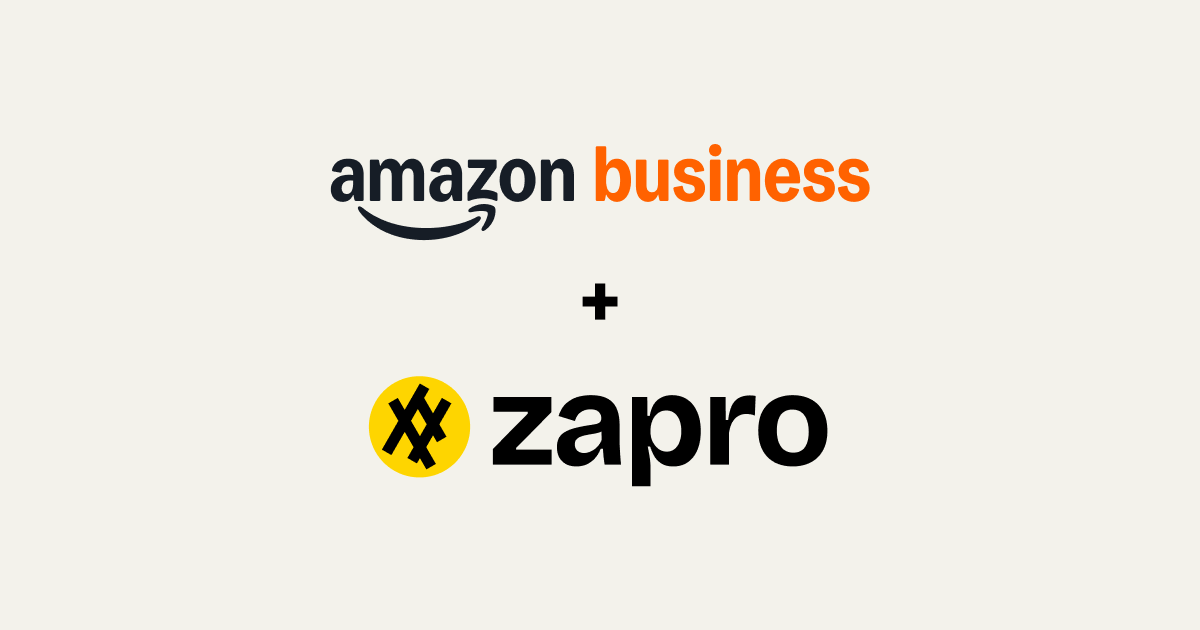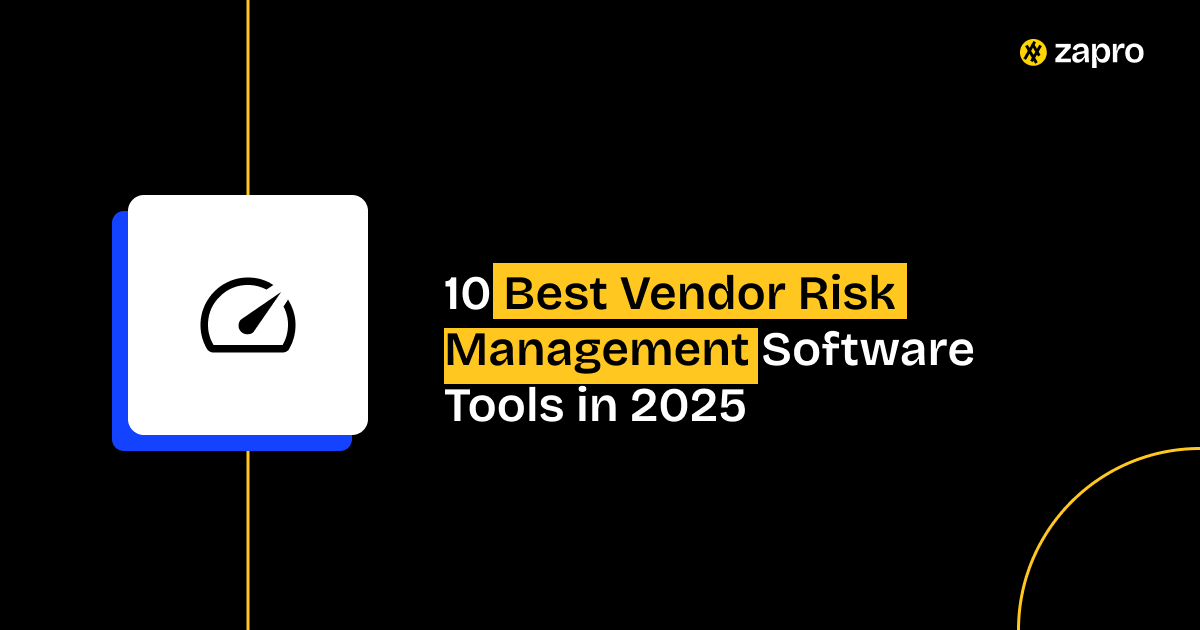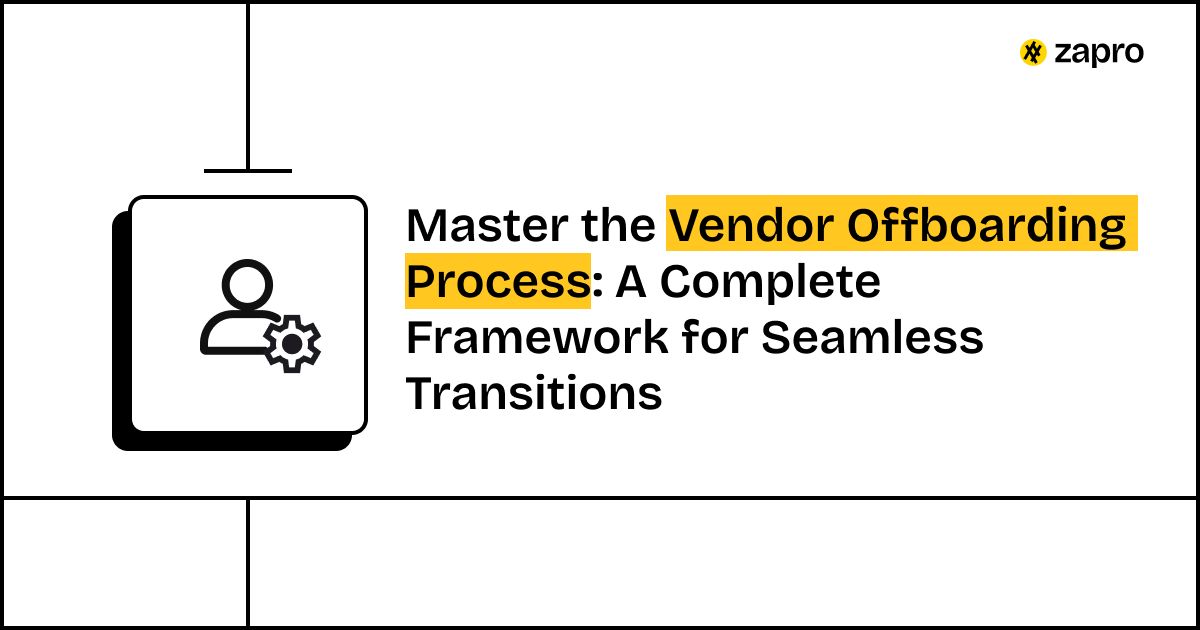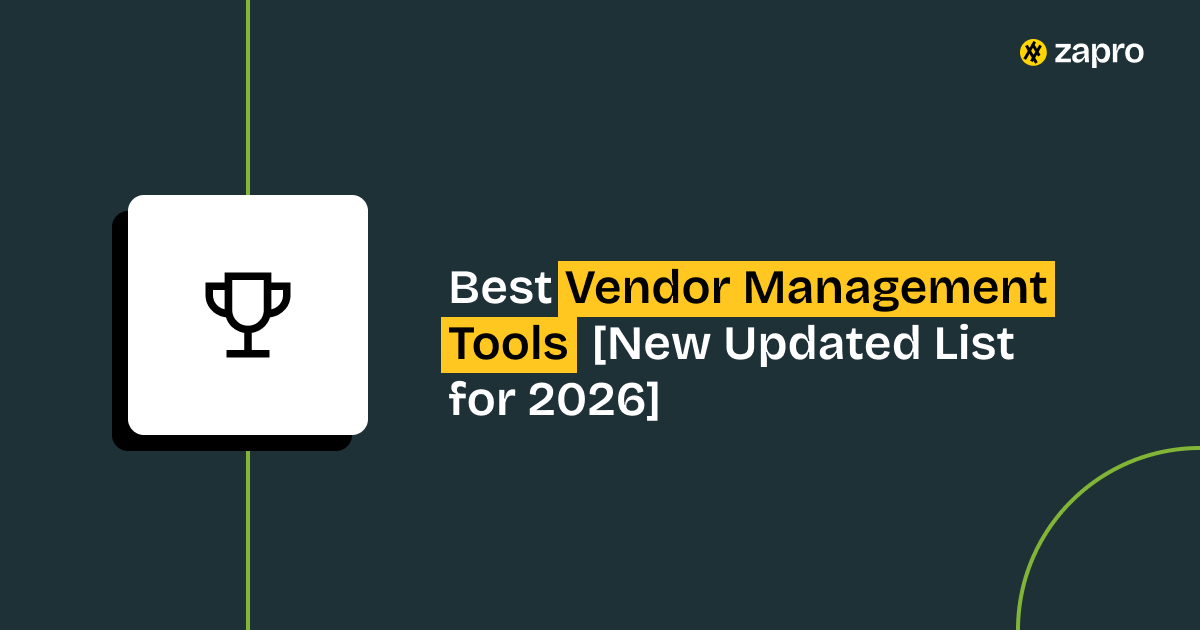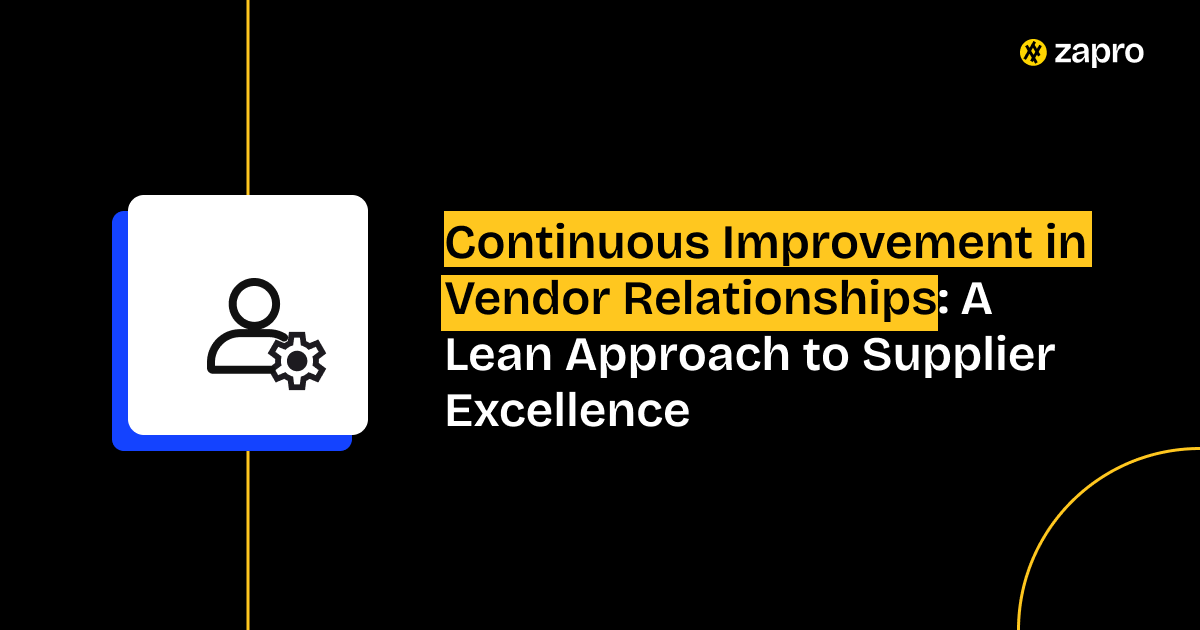Vendor risk management software has become one of the most crucial investments for modern organizations. A vendor risk management software helps businesses to comply with regulatory requirements, monitor the risks tied to third-party vendors, thwart online threats, and steer clear from financial perils.
Obviously, the many dangers of working with external vendors don’t merely stop at delayed deliveries or poor quality. Data breaches, overlooked GDPR or SOC 2 regulations, and weak vendor risk management frameworks pose a serious threat to the very future of a business. The modern world has shrunk, distances have been erased, and companies now operate side by side with third parties across the globe. Apparently, this makes it crucial to move with speed, adhere to regulations, and stay safe at every step.
The benefits of adopting a dedicated vendor risk management platform are incredible. From onboarding to continuous monitoring of a vendor, these magnificent tools provide all the details on a unified dashboard. Transform all the manual, time-consuming processes into a strategic advantage.
In this blog post, we uncover the key features, pros, cons, best suited for, and pricing of the 10 best vendor risk management software tools in 2025. Zapro earns our editor’s pick as the most outstanding overall solution. Whether you’re a small business looking for a supplier risk assessment tool that works in a breeze or an enterprise needing enterprise-grade vendor risk management solutions, you’ll find the right fit here.
Core functions of VRM tools
- The system tracks vendor management system vulnerabilities and breach incidents to protect data security.
- The system enables organizations to stay compliant with GDPR and HIPAA and SOC 2 and ISO 27001 standards.
- The system provides business continuity support by showing organizations the operational and financial risks which endanger their supply chain stability.
- The system provides enhanced vendor performance monitoring through its integrated due diligence system and scheduled assessment methods.
- The system enables businesses to expand their vendor network while maintaining manageable workloads for compliance and procurement teams.
VRM tools have evolved from optional features to mandatory security measures for organizations seeking secure growth, stakeholder trust, and effective risk
Why evaluating vendor risk management tools matters
The expansion of vendor networks leads to more severe and extensive third-party risks that organizations must address. Organizations face major financial losses because of inadequate vendor oversight which results in security breaches and regulatory penalties. Evaluating and picking the most suitable VRM tool represents a vital operational requirement.
Rising third-party risks
- Organizations become vulnerable to cyber threats because their vendors retain ongoing access to their critical systems and data.
- Organizations need to verify their vendors operate with ethical standards and sustainable practices.
- The improper execution of vendor duties results in supply chain
- Businesses face financial penalties and legal consequences because their vendors fail to meet regulatory standards.
Statistics regarding vendor-related risks
- Research indicates that third-party involvement caused more than 60% of data breaches during 2024.
- Businesses face substantial financial penalties when they fail to comply with regulations because GDPR and other international frameworks impose severe penalties.
- Gartner research shows that organizations without proper vendor risk management systems will experience 45% more disruptions by 2025.
Top 10 Vendor Risk Management Platforms
1. Zapro (Editor’s Pick – Best Overall Vendor Risk Management Platform)
Summary
Zapro is the latest AI-powered vendor risk management platform that comes packing loads of features. It helps automate from vendor onboarding, monitoring, and to compliance. By integrating all the process and streamlining workflows, it guarantees regulations and smooth flow.
| Category | Details |
| Key Features | • Real-time vendor risk scoring • Automated onboarding workflows • AI-driven compliance tracking • Custom dashboards and risk alerts· |
| Pros | • Advantageously consolidates all vendor data in one platform • Incredible flexibility for compliance-heavy industries • Automates painstakingly manual risk assessments |
| Cons | • New users may find advanced customization a bit overwhelming |
| Best For | • Finance, healthcare, and enterprises where regulations and compliance play a crucial role. |
| Pricing | • Custom pricing based on organization size and modules required. |
Get Started with the #1 Vendor Risk Platform

2. SAP Ariba (Best suited to Enterprise Procurement Risk)
Summary
SAP Ariba perfectly blends procurement efficiency with tools for managing supplier risks. It provides large enterprises with the ability to mitigate risks side by side with procurement and spend management software.
| Category | Details |
| Key Features | • Supplier risk assessment tool with global compliance checks • Real-time spend monitoring • Global supplier directory and scoring |
| Pros | • Fantastic depth of procurement integration • Strong regulatory compliance support |
| Cons | • Complex setup, requires trained administrators • Expensive for SMEs |
| Best For | • Enterprises already using SAP ecosystem tools |
| Pricing | • Quote-based, typically high for larger corporations |
3. Coupa (Best for Spend & Risk Integration)
Summary
Coupa brings vendor risk management and spend insights under one roof, apparently giving finance and procurement leaders the power to comprehend risk and cost together.
| Category | Details |
| Key Features | • Automated supplier risk scoring • Spend-to-risk dashboards • Supplier onboarding workflows |
| Pros | • Outstanding spend visibility • Effective compliance monitoring |
| Cons | • Limited customization for niche industries • Premium pricing |
| Best For | • Organizations needing stronger integration between finance and vendor risk management programs |
| Pricing | • Subscription-based, higher tiers for enterprise clients |
4. Oracle Procurement Cloud (Best for Oracle Users)
Summary
Oracle Procurement Cloud advantageously suits organizations already relying on Oracle infrastructure. It integrates vendor management tools seamlessly into existing Oracle systems.
| Category | Details |
| Key Features | • Centralized vendor repository • Risk dashboards with alerts • Compliance with SOC 2 and GDPR |
| Pros | • Works hand-in-hand with Oracle ERP • Strong regulatory adherence |
| Cons | • Less intuitive compared to newer platforms • Costly implementation |
| Best For | • Businesses already invested in Oracle products |
| Pricing | • Custom enterprise pricing |
5. Jaggaer (Best for Education & Public Sector)
Summary
Jaggaer – a name well known for optimizing higher education and public sector procurement. It provides deeper visibility and supports faster contract execution, while increasing compliance and reducing risk.
| Category | Details |
| Key Features | • Supplier risk assessment tool built for public budgets • Advanced compliance reporting • Audit-ready documentation |
| Pros | • Specifically caters to regulation-heavy sectors • Comprehensive reporting features |
| Cons | • Complex UI • Not suited for SMEs |
| Best For | • Universities, government entities, and publicly funded organizations |
| Pricing | • Available on request |
6. GEP SMART (Best Unified Procurement & Risk Tool)
Summary
GEP SMART is a fabulous all-in-one suite, offering procurement and vendor risk management solutions side by side.
| Category | Details |
| Key Features | • Centralized supplier repository • Compliance and regulation monitoring • Advanced analytics dashboards |
| Pros | • Single pane of glass for procurement and risk • Effective global scalability |
| Cons | • Implementation time can be long • Higher total cost of ownership |
| Best For | • Large, global businesses with complex procurement ecosystems |
| Pricing | • Custom enterprise pricing |

40% of compliance leaders say that between 11% and 40% of their third-party vendors are high-risk.
7. Ivalua (Best for ESG-Focused Risk Monitoring)
Summary
Ivalua takes off by weaving ESG metrics into its vendor risk management framework. It enables organizations to grow their own environmental, social, and governance.
| Category | Details |
| Key Features | • ESG supplier scorecards • Predictive risk analytics • Advanced compliance workflows |
| Pros | • Incredible focus on ESG risk • Strong predictive capabilities |
| Cons | • Steeper learning curve • Premium pricing |
| Best For | • Enterprises focused on sustainable supply chain management |
| Pricing | • Enterprise-level, custom quotes |
8. ProcurementExpress.com (Best for Small Teams)
Summary
ProcurementExpress.com is a hassle-free supplier risk assessment tool ideal for startups and smaller teams. It offers a decent interface that allows businesses to effortlessly track risks without heavy IT requirements effectively.
| Category | Details |
| Key Features | • Simple supplier onboarding • Risk dashboards and alerts • Budget control features |
| Pros | • Easy to use • Affordable compared to enterprise tools |
| Cons | • Limited advanced analytics • Not suitable for global compliance-heavy industries |
| Best For | • Small teams and startups |
| Pricing | • Starting at $35 per user/month |
9. Precoro (Budget-Friendly Risk Management for SMEs)
Summary
Precoro provides an affordable vendor risk management platform, advantageously balancing procurement features with supplier risk management tools.
| Category | Details |
| Key Features | • Automated approvals • Vendor compliance tracking • Spend and risk reports |
| Pros | • Cost-effective for SMEs • Easy onboarding in a breeze |
| Cons | • Limited functionality for enterprise use cases |
| Best For | • SMEs looking to adhere to regulations without high costs |
| Pricing | • Starts at $35 per user/month |
10. Kissflow Procurement Cloud (Best No-Code Workflow Customization)
Summary
Kissflow is an impressive low-code platform for IT and no-code platform teams who wish to customize supplier onboarding and vendor risk workflows without technical expertise.
| Category | Details |
| Key Features | • Customizable workflows • Real-time vendor risk alerts • Centralized vendor repository |
| Pros | • Fantabulous flexibility • No-code customization is effortless |
| Cons | • Advanced analytics require add-ons • Less suited for compliance-heavy industries |
| Best For | • Organizations seeking adaptable, no-code vendor risk management solutions |
| Pricing | • Starts at $1,500 per month for base package |
Benefits of using vendor risk management software
Organizations achieve immediate advantages through Vendor Risk Management (VRM) tool implementation which creates lasting benefits for their operations. The system helps organizations reduce their exposure to risks and at the same time boosts operational efficiency and vendor relations and regulatory compliance.
The main advantages of using this system include:
1. Enhanced data security & protection
- The system continuously scans vendors to detect their existing cybersecurity weaknesses.
- The system protects sensitive company and customer information from potential breaches that could occur.
2. Regulatory compliance & audit readiness
- The system runs automated compliance assessments that follow GDPR and SOC 2 and ISO 27001 and HIPAA standards.
- The system keeps complete audit records which simplify the process of showing compliance during official inspections.
3. Time & cost savings via automation
- The system removes the need for manual spreadsheet work and repetitive due diligence procedures.
- The system enables procurement and compliance teams to redirect their work toward important strategic tasks.
4. Better vendor performance visibility
- The system provides real-time access to risk scores, incident records, and compliance status information.
- The system enables users to perform vendor comparisons which leads to improved decision-making processes.
5. Improved supply chain resilience
- The system detects operational or financial warning signs in vendors at an early stage.
- The system decreases the probability of supply chain interruptions which affect business revenue streams.
6. Strengthened business relationships
- The system enables vendors to work together with full transparency.
- The system helps organizations develop trust through mutual understanding about risk management and compliance standards.
Common mistakes to avoid when choosing a VRM tool
The selection of a vendor risk management solution becomes ineffective when organizations rush into the process. The following list contains essential mistakes which organizations should avoid during their selection process.
1. Overlooking scalability
Businesses select tools that handle their present vendor numbers yet these solutions become inadequate when vendor numbers exceed their current capacity. The tool needs evaluation for its ability to expand with business growth.
2. Ignoring integration capabilities
The selection of a VRM solution should prioritize integration capabilities with existing systems.
A VRM solution which lacks integration with ERP systems and procurement and security platforms leads to data silos and additional manual work. The selection process should prioritize integration capabilities above all else.
3. Focusing only on tool costs instead of ROI
Organizations should evaluate return on investment (ROI) instead of making decisions based solely on tool costs.
The initial cost savings from low-cost tools do not protect organizations from future compliance penalties and security breaches. Organizations should calculate the complete return on investment rather than focusing on subscription costs.
4. Overlooking regulatory compliance features
Organizations that fail to implement regulatory compliance features in their selection process will face penalties and audit failures.
5. Relying solely on vendor self-reported data
Businesses that depend solely on vendor self-reported data for their VRM process face significant risks.
A robust VRM system requires built-in features for structured vendor onboarding and automated questionnaire distribution and independent verification processes.
Businesses that prevent these errors during VRM solution selection will obtain tools which fulfill present needs while providing sustained protection and regulatory compliance.
Features of Top Vendor Risk Management Platforms
Vendor risk management software today can make a positive impact in your business only when the features you rely on are chosen perfectly, otherwise it is bound to remain a fragmented process. The most suitable platforms get you a thorough visibility, agility, and velocity.
The best tools available in the market today, efficiently combine procurement, compliance, and finance teams, furnishing them with automated risk assessments to real-time alerts. In simpler terms, do away the complexities involved in managing the manual tasks and convert it into a seamless strategic advantage.
Key highlights include:
- Automated risk assessment
- Real-time monitoring and alerts
- Compliance and regulation tracking
- Centralized vendor repository
- Advanced analytics and reporting
How to evaluate and choose the right VRM tool
A systematic method exists to help organizations pick the most suitable VRM tool for their needs. The selection process for Vendor Risk Management (VRM) tools needs a systematic approach. The following framework provides a practical method to evaluate VRM tools.
1. Identify business needs & risk priorities
- Your organization must identify which risks need management attention (cybersecurity, compliance, ESG, operational).
- The procurement team and IT department and compliance department need to collaborate for creating shared priorities which will guide the selection process.
2. Compare features vs. requirements
- Your business requirements should guide the selection of essential features which include automated risk scoring and compliance mapping.
- A checklist system helps you identify which features are essential and which ones are optional.
3. Check integrations with existing systems
- The system requires proper integration with your existing ERP system and procurement platform and IT security infrastructure.
- System integration between platforms should be smooth because it removes manual tasks and stops data from becoming scattered.
4. Assess reporting & dashboard capabilities
- The system should offer adjustable dashboards which show current data in real time.
- The system should generate reports that fulfill both internal executive requirements and external audit requirements for documentation.
5. Evaluate the tool’s ability to expand with your business growth
- The system needs to support vendor management for both small and large vendor bases when your business grows.
- The system needs to support flexible feature and module additions when compliance standards change.
6. Compare pricing & ROI
- The total cost of ownership includes both initial expenses and the value of saved time and reduced compliance risks and breach expenses.
- The system pricing structure should match your vendor management requirements and vendor numbers.
7. Review user feedback together with case studies from other customers
- You should examine customer feedback and analyst reports from Gartner and Forrester and peer feedback from other organizations.
- Review case studies from your industry to understand how different tools perform when used in actual business operations.
8. Request free trials or demos
- The evaluation process includes direct testing to determine how users interact with the system and how it can be customized for team adoption.
- Multiple departments should participate in demo sessions to obtain complete feedback about the system.
The established evaluation process helps organizations select VRM tools which fulfill present needs while supporting future risk management plans.
When you’re evaluating tools, stay focused on:
- Integration with your existing procurement management stack
- Customization options
- Real-time alerting and monitoring
- Compliance reporting (GDPR, SOC 2, ISO)
- Supplier onboarding features
- Total cost of ownership
Vendor Risk Management Best Practices
A solid vendor risk management program isn’t something that just falls into place, it’s carefully built with discipline, consistency, and smart practices that actually work in the long run. By centralizing vendor data, running regular risk checks, and staying on top of compliance requirements, businesses can painlessly steer clear of hazards that might otherwise jeopardize day-to-day operations.They are:
- Centralize vendor data
- Categorize vendors by risk profile
- Conduct regular assessments with vendor risk assessment tools
- Automate compliance tracking
- Continuously monitor KRIs
- Leverage AI for predictive insights
Why Vendor Risk Management Matters More in 2025
In 2025, vendor risk needs to be effectively addressed. With more and more cases of third-party vendor breaches becoming more frequent, there is a dire need to mitigate these threats without any delay.
Vendor risk management plays a crucial role because:
- Third-party breaches are on the rise
- Regulatory pressure is tightening worldwide
- Global supply chains introduce many facets of risk
- ESG and sustainability requirements are gaining importance
Final Thoughts
In today’s fast-paced world, vendor risk management software has become an essential part of the business. Without the perfect tool, it is hard to determine the risk factors and put the proper solution in place. By incorporating the vendor risk assessment tool, you could easily put the risks at bay, stay compliant, and build outstanding vendor relationships management.
Among the 10 solutions reviewed, Zapro stands out as the most complete vendor risk management platform, thanks to its AI-driven compliance workflows, real-time risk scoring, and effortless onboarding.

Start Smarter with Zapro
Automate onboarding, track risks instantly, and stay ahead of compliance—all in one platform.
Frequently Asked Questions
1. What is vendor risk management software?
Organizations that want to effectively identify, assess, tackle, and mitigate risks from third-party vendors or business partners go for the best Vendor risk management (VRM) software based on their business and budget requirements. A Vendor risk management (VRM) software helps to ensure compliance and operational resilience as well.
2. How do I evaluate vendor risk?
Manual vendor risk assessment has proved to be not handy. Get the best vendor risk assessment tool to evaluate vendor risk. You’ll be able to;
• establish clear risk criteria
• identify different risk types,
• conduct due diligence through questionnaires
• do document reviews, and
• run potentially on-site audits
3. What is the best vendor risk management platform for small businesses?
The best vendor risk management platform for small businesses are:
- ProcurementExpress.com: great for simple vendor onboarding, risk dashboards, and keeping things affordable.
- Precoro: balances cost and functionality, delivering risk tracking plus spending visibility without overpaying.
Agreed, the above two are budget-friendly, but Zapro stands out: it delivers vendor risk assessment, compliance workflows, and real-time monitoring in a single platform.
4. What features should I look for in a supplier risk assessment tool?
The key features that you need to look for in a supplier assessment tool is:
- automated risk scoring
- real-time alerts
- seamless integration with existing systems
- comprehensive risk coverage (like financial, cybersecurity, and ESG)
- strong reporting capabilities
- workflow automation and,
- vendor collaboration tools for information exchange
5. What are the benefits of using vendor risk assessment tools?
The benefits of using vendor risk assessment tools are many. Here are the main benefits you should know: identify high-risk vendors, stay compliant, and boost vendor relationships.
Don’t miss our weekly updates
We’ll email you 1-3 times per week—and never share your information.
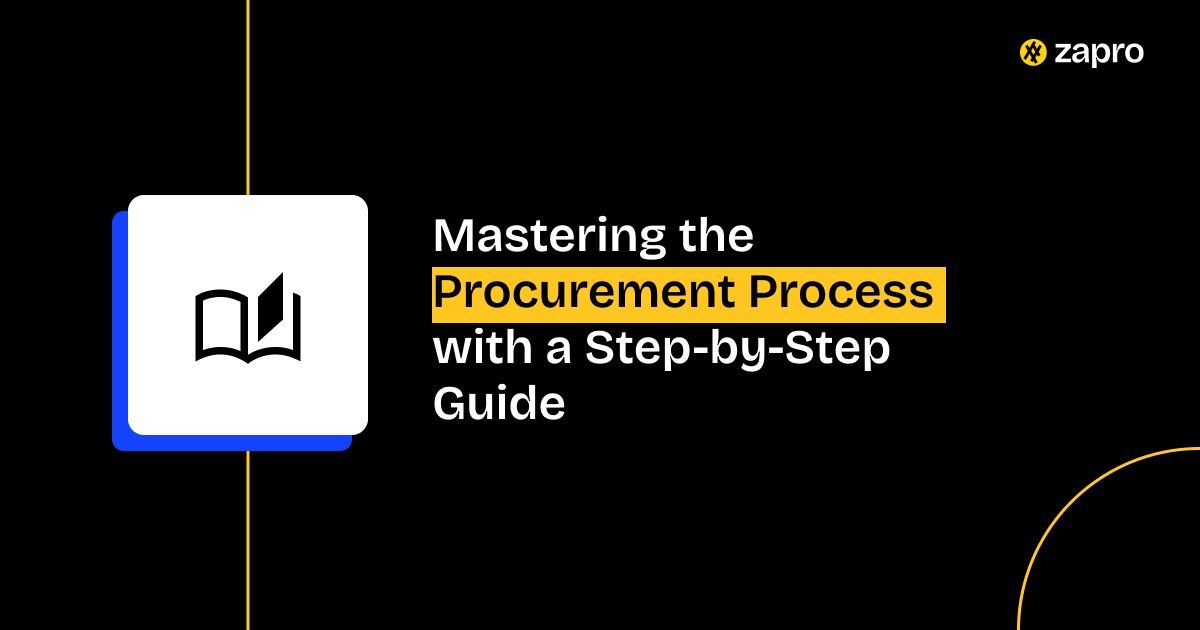
 Healthcare
Healthcare Financial Services
Financial Services Technology
Technology Venture Capitalist
Venture Capitalist Chief Procurement Officer
Chief Procurement Officer Chief Financial Officer
Chief Financial Officer